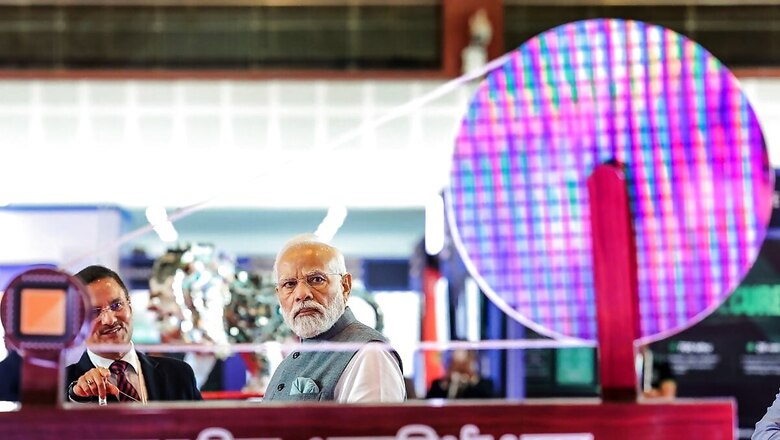
views
Gujarat was the first state to come up with a dedicated semiconductor policy in 2022 and has been a perfect destination for the industry. Its policy offers a range of incentives to attract semiconductor manufacturing companies, including capital and land subsidies as well as tax breaks. Now, following the state’s footsteps, Odisha and Assam have come up with their own policies to begin their chip journey.
Apart from geographical advantage, stable political atmosphere, skilled workforce and availability of a well-developed infrastructure, industry insiders praised Gujarat for its industry-focused semiconductor policy. For example, US chip maker Micron Technology will have an assembly and test facility in the state.
On the sidelines of ‘Semicon India 2023’, which took place last month, the India Electronic and Semiconductor Association (IESA) signed agreements with the Uttar Pradesh government via the UP Electronics Corporation Ltd (UPLC). A multi-stakeholder engagement strategy, this collaboration will seek to curate semiconductor and fabless policy for the state.
The emphasis will be on developing hardware centres of excellence, which will help to boost the semiconductor ecosystem in Uttar Pradesh. Additionally, it was decided that skill development efforts will take the stage, ensuring that the state’s workforce is prepared to succeed in changing the semiconductor landscape.
Odisha is also willing to foster a semiconductor ecosystem in the state. The UK-based SRAM & MRAM Group have already started investing in the state as it signed an agreement with the government. Odisha also signed another pact with Epic Foundation last year for designing and manufacturing chips as well as electronic products.
In July, meanwhile, the Odisha government approved the semiconductor manufacturing and fabless policy. Under this, the state hopes to have at least one manufacturing unit and 100 fabless design companies. It is also expected that 5,000 direct and 20,000 indirect jobs will be created in Odisha in seven years.
Recently, the Assam government, too, announced that it had approved the Assam Electronics (Semiconductor, etc) Policy 2023, during its 100th cabinet meeting. It is designed to transform the state into a dynamic and self-sustaining centre for semiconductor manufacturing and electronics production; and it also aims to attract investments in semiconductor fabrication and design.
This policy has ambitious goals, including the creation of more job opportunities in the global market, development of a robust ecosystem and enhancing market resilience. The benefits will extend to all new entities under the category of ‘semiconductor manufacturing’.
Eligible industrial units will have the opportunity to implement their approved capacity plan in phases. It was said this implementation must take place within the specified timeframe of three years for MSMEs and five years for large industries from the date of their initial capital investment.
Assam chief minister Himanta Biswa Sarma said: “Advanced states like Uttar Pradesh, Gujarat and Odisha have announced a policy for semiconductors. We have announced a policy where there will be a capital investment subsidy. With our new production-linked incentive policy, Assam will soon attract investments to manufacture semiconductors in the state.”
Talking about the policies of Odisha and Assam, IESA chairman Sanjay Gupta said the proactive steps in launching own semiconductor policies following Gujarat’s lead, were undoubtedly commendable. He said these policies reflected a commitment to align with the National Policy on Electronics 2023 and the National Policy on Semiconductor Manufacturing 2023, aiming to position India as a global hub for electronics system design and manufacturing (ESDM).
“Odisha’s Semiconductor Manufacturing and Fabless Policy 2023, is an encompassing strategy that spans the entire semiconductor value chain. By offering incentives such as subsidies on land, power and water tariffs as well as production-linked incentives, the policy seeks to create an appealing investment environment and lays emphasis on fostering a thriving ESDM ecosystem through research, innovation and entrepreneurship,” Gupta told News18.
Similarly, in terms of Assam’s policy, he said: “Offering a substantial capital investment subsidy along with various other incentives like interest subsidy, stamp duty exemption, GST reimbursement and employment generation subsidy, Assam’s policy encourages both domestic and foreign investments. This approach demonstrates a forward-looking strategy that recognises the role of semiconductors in the digital economy and national security.”
He further said these policies align with the regional strengths of Odisha and Assam, which encompass skilled human resources, abundant natural resources and strategic geographical locations.
“In the foreseeable future, these states are poised to emerge as appealing destinations for the ESDM industry, playing a vital role in the growth and advancement of the overall electronics sector in India. At IESA, we anticipate that these policies will contribute significantly to creating a robust ecosystem that attracts investments, fosters innovation and paves the way for India to become a global leader in semiconductor manufacturing and design,” he added.




















Comments
0 comment